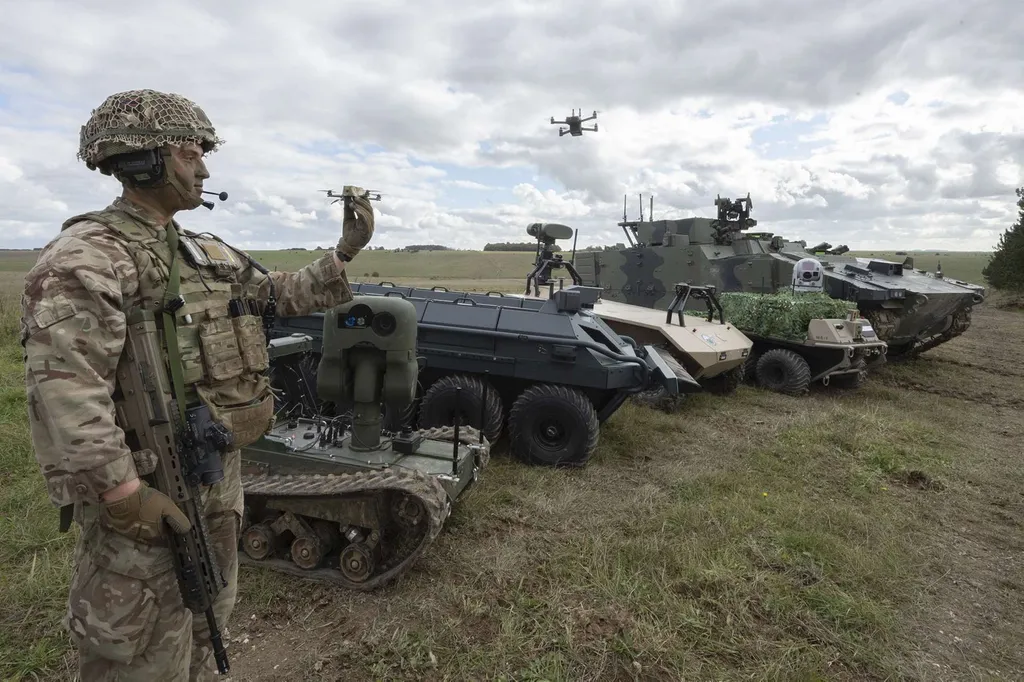The UK Armed Forces are undergoing a profound transformation, with artificial intelligence (AI) emerging as a cornerstone of its future defence strategy. This shift is not merely about adopting new technology; it is about redefining the very nature of warfare. AI is seen as a game-changer, a way to “fix the fight” by providing an unfair advantage to those who wield it effectively. The UK Ministry of Defence (MOD) is betting big on AI to give its forces the edge in any conflict, leveraging ultra-fast processing of battlefield intelligence in real time.
At the heart of this transformation is the Talos programme, a Ministry of Defence initiative focused on accelerating a defence-wide approach to integrated command and control. Central to Talos is cutting-edge AI software systems like the Lattice Mesh from US defence technology company Anduril Industries. Since its trial at Cranfield Ordnance Test and Evaluation Centre in Wiltshire in October 2023, the Lattice Mesh has evolved into a decentralised mesh networking capability. It securely distributes data across services, domains, platforms, and long distances, providing access to critical information in remote, degraded, and low-bandwidth environments at the tactical edge. It serves as the core networking capability, supporting Command and Control and Mission Autonomy, capable of connecting thousands of Anduril and third-party systems across the world in support of real-world operations.
The integration of AI into the UK’s defence infrastructure is already yielding remarkable results. General Sir Jim Hockenhull, Commander of Cyber & Specialist Operations Command (CSOC), emphasised that “drones, artificial intelligence, and autonomy, are no longer emerging technologies. They are in the fight today.” The MOD’s Project Asgard is a testament to this reality. Designed to “set the conditions for the unfair fight,” Asgard allows the British Army to transmit frontline data to headquarters in seconds, significantly speeding up the kill-chain and enabling real-time responses to emerging threats. The Asgard digital system, tested by British soldiers in Estonia, is poised to make the Army “10 times more lethal over the next 10 years” by combining weapon systems, surveillance equipment, automated technology, digital connections, and data analysis.
The UK is not alone in recognising the potential of AI in warfare. Palantir, a US software company, has been instrumental in Ukraine’s artillery targeting systems. Palantir’s software collates data from a myriad of sources—human intelligence, drones, radar, and thermal imaging—and uses AI modelling to process this information, providing commanders with a variety of targeting options. The software even learns and improves over time, becoming more accurate with each use. Now, Palantir is collaborating with the MOD to develop AI-powered capabilities tested in Ukraine, further enhancing the UK’s defence technology innovation.
The MOD is also developing the Digital Targeting Web (DTW), a system designed to better connect Armed Forces weapons systems and enable faster decision-making and execution of targeting enemy threats. “The Digital Targeting Web (DTW) is not a single platform or product. It is not a software suite from one supplier,” General Sir Jim explained. “It is an ecosystem, an orchestration of infrastructure, products, and services. It brings together defence’s currently fragmented targeting and command-and-control systems, data, platforms, and networks—enabling the integration of emerging and novel technologies.” This orchestration is not just a technical challenge; it is a strategic imperative to ensure that the UK’s adversaries are left facing the music of defeat.
As the UK continues to integrate AI into its defence infrastructure, the question arises: Could the next war be won by artificial intelligence? The answer lies in the UK’s ability to drive this transformation in harmony and at a pace that ensures its forces are battlespace-ready for tomorrow’s conflicts. The stakes are high, but the potential rewards are even higher. The UK’s commitment to AI in defence is not just about keeping pace with technological advancements; it is about setting the standard for the future of warfare.

